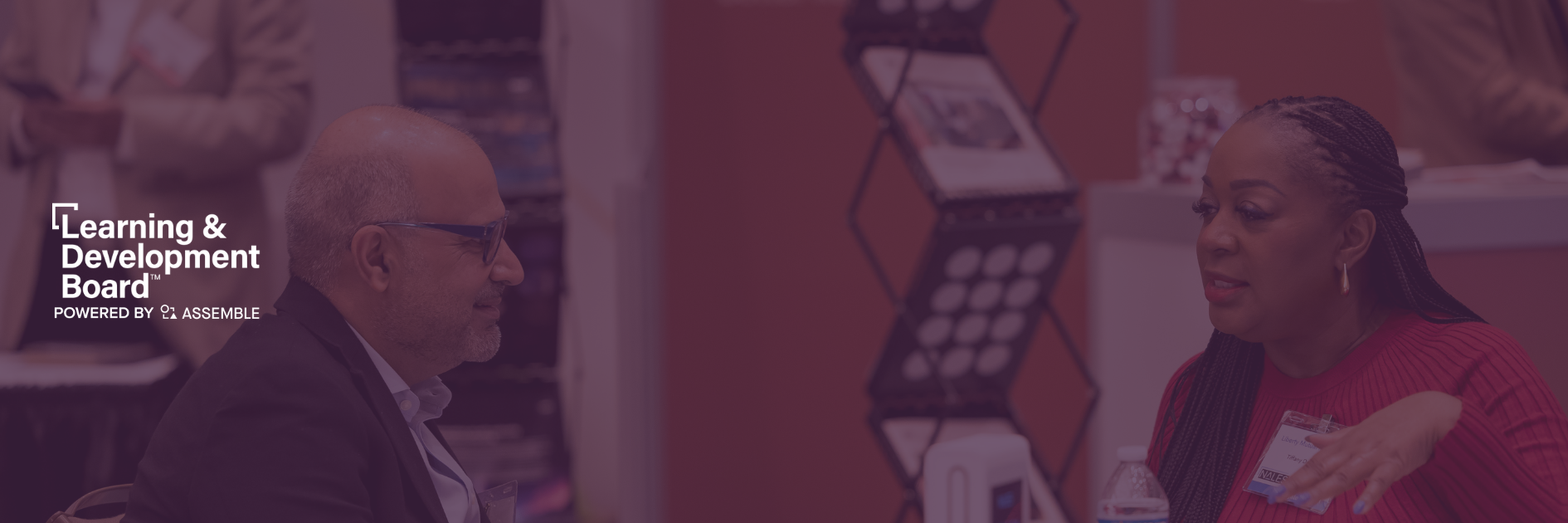Key takeaways:
- Most L&D leaders are dissatisfied with their LMS: Half are considering switching platforms, and the other half describe their relationship as “complicated” — with zero saying they love their current tool.
- Layered ecosystems are the new normal: Organizations are combining LMS platforms with LXPs, skills tools, and content vendors to create comprehensive learning experiences, despite added complexity.
- Some platforms show early promise: Several leaders praised cost-effectiveness, roadmap, and customer support, though they still require additional tools for optimal user experience.
In a recent Learning & Development Board benchmarking session, senior L&D leaders from the world’s largest companies shared a stark reality about learning management systems: 50% are considering breaking up with their current platform, while the other 50% describe their relationship as “complicated.” Not a single leader chose “love it.”
We’ll take a look at how Learning & Development Board members are getting the most out of current LMS tools and steps they’re taking to build effective tech stacks to improve learning initiatives.
Address User Experience Problems Before They Drive Defection
The widespread dissatisfaction stems largely from platforms that prioritize administrative features over learner experience. Leaders consistently cited poor user interface design and limited reporting functionality as primary frustrations. Some vendors were specifically called out for clunky experiences that frustrate both end users and administrators.
Many L&D teams find themselves exporting raw CSV or PDF reports and rebuilding them in external tools to create meaningful dashboards for stakeholders. This workaround approach signals a fundamental gap between what enterprise learning technology promises and what it delivers.
The reporting limitations extend beyond inconvenience to strategic impact. When learning leaders can’t easily demonstrate ROI or track skill development across their organization, it becomes difficult to secure executive buy-in for expanded learning initiatives.
Build Strategic Learning Ecosystems Instead of Waiting for Perfect Solutions
Rather than wait for the perfect all-in-one solution, L&D leaders are intentionally building layered learning ecosystems. This approach treats the primary LMS as a learning record store for compliance and formal tracking, while adding specialized tools for enhanced user experiences.
The most common combinations involve pairing traditional LMS platforms with learning experience platforms for cohort-based programs. Some organizations add gamification tools for frontline training or social learning platforms for micro-content delivery.
However, this ecosystem approach creates its own challenges. Leaders report administrative headaches from managing multiple vendor relationships, disjointed user experiences as learners navigate between platforms, and complex data integration requirements for comprehensive reporting.
One Learning & Development Board member noted their team has been managing layered systems for over a decade and still struggles to align tools and data effectively.
Avoid Vendors Diluting Core Capabilities Through Expansion
As LMS vendors expand into “holistic talent solutions,” members expressed concern that core learning management capabilities suffer. One tool received particular criticism for slowed development cycles — dropping from quarterly to tri-annual releases — as they focused resources on acquired platforms and expanded talent management features.
This trend toward comprehensive talent platforms creates a mismatch with organizational needs. Members said they prefer vendors that excel at learning delivery and tracking rather than attempting to replace existing HR systems.
The focus on expansion often comes at the expense of fundamental improvements to user interface, reporting, and content management.
“We literally spent 30 minutes in our planning meeting about how we’re going to make sure vendors don’t waste their time talking about AI with us. We have more basic needs that need to be leveled up first.”
Focus Platform Evaluations on Core Functionality Over Marketing Hype
L&D leaders are developing more sophisticated approaches to vendor evaluation that cut through marketing hype. Rather than being swayed by AI demonstrations or comprehensive talent management pitches, evaluation teams are focusing on core functionality criteria including system architecture, ecosystem connectivity, administrative ease, and content management capabilities.
One Learning & Development Board member emphasized redirecting vendor conversations.
“We literally spent 30 minutes in our planning meeting about how we’re going to make sure vendors don’t waste their time talking about AI with us,” that member said. “We have more basic needs that need to be leveled up first.”
Successful evaluation processes involve extensive sandbox testing with actual users, scoring systems that weight fundamental capabilities over emerging features, and honest peer benchmarking to understand real-world implementation challenges beyond vendor promises.
Set Realistic Expectations and Build Intentional Technology Stacks
The learning management system landscape requires a pragmatic approach rather than waiting for perfect solutions. Our members acknowledged that no single platform currently delivers everything needed for modern learning experiences. Instead, they’re building intentional technology stacks with clear roles for each component.
For compliance-heavy industries, certain platforms continue serving as reliable record systems despite user experience limitations. For organizations prioritizing learner engagement, the combination of traditional LMS platforms with specialized experience and skills tools proves more effective than comprehensive solutions that attempt everything.
The path forward involves realistic expectations, strategic layering, and continuous peer benchmarking to navigate vendor claims versus operational reality.
For L&D leaders managing these complex technology decisions, the Learning & Development Board provides the vendor-free environment needed to benchmark experiences, validate strategies, and learn from peers who’ve successfully built learning technology ecosystems that actually serve their organizations’ needs.


